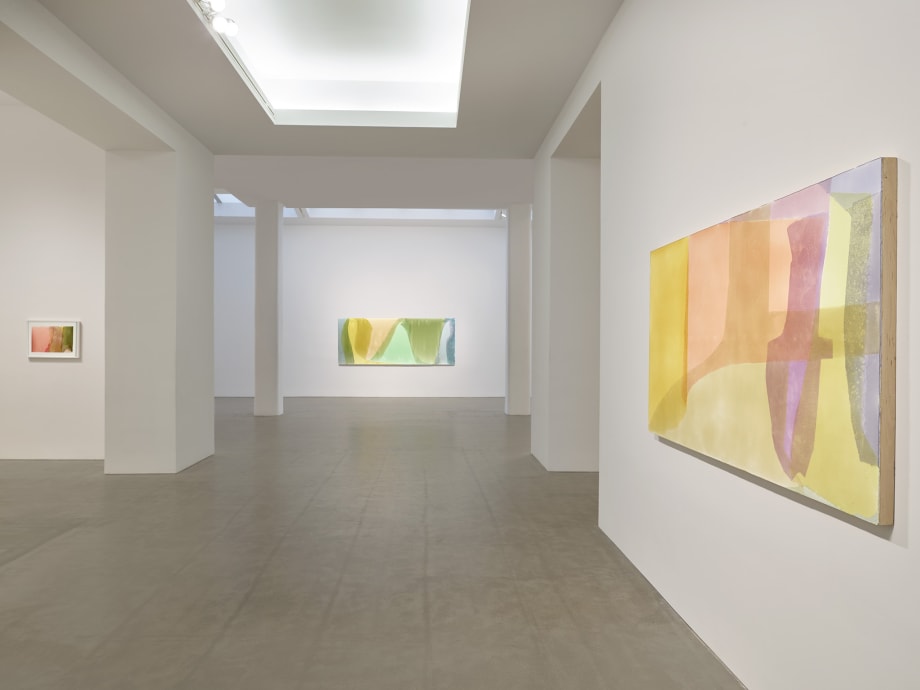Berry Campbell is pleased to present its fourth exhibition of paintings by contemporary Color Field painter, Jill Nathanson. Using a technique of pouring acrylic polymers, Nathanson’s paintings are characterized by coloristic inventiveness, as overlapping layers of translucency create new hues. Her paintings evoke what she calls “color desire,” as the fluidity of the forms engage us in seeking color resolutions across the pictorial field, while drawing the viewer to the different spaces these colors occupy as well as the ways in which they attract and repel each other. This exhibition will be comprised of 18 recent paintings by the artist, including her largest painting to date, Psalm Harp.
Nathanson became fascinated by Color Field painting when she attended Bennington College in Vermont. She arrived at the school in the mid-1970s, when it was at the center of Color Field abstraction. Over the last four decades, Nathanson has deepened her exploration of color dynamics, seeking to transmit the affective reality of seeing. She courts chaos in her method by employing chance, but she also works methodically—each overlay of color takes a day to dry. For the viewer, her paintings evoke energies in the body as well as optical experience, and the physical presence of each painting resists immediate assimilation involving a dynamic, layered search for unity.
Nathanson was recently included in Drawn to Color, a permanent collection exhibition at the Museum of Fine Arts, Houston alongside Helen Frankenthaler, Mark Rothko, and Emmi Whitehorse. Additionally, she was included in Point of Departure: Abstraction 1958 – Present at the Sheldon Museum of Art, Lincoln, Nebraska. Her exhibitions have been reviewed in publications such as ARTnews, Arts magazine, The Brooklyn Rail, The Hudson Review, and The New York Times, among others. Jill Nathanson is represented by Berry Campbell Gallery, New York.
Jill Nathanson: Chord Field opens with a reception on Thursday, June 27, 2024, from 6 to 8 pm and is accompanied by a 24-page catalogue with an essay by David Rhodes. The exhibition is on view through August 16, 2024.

